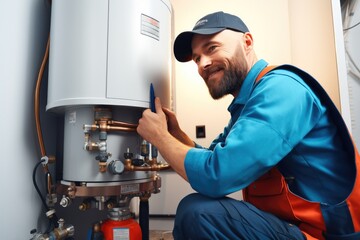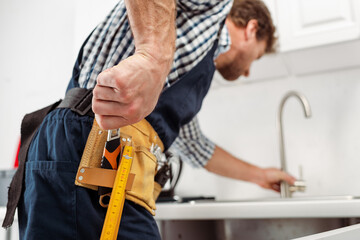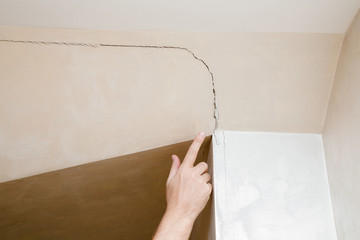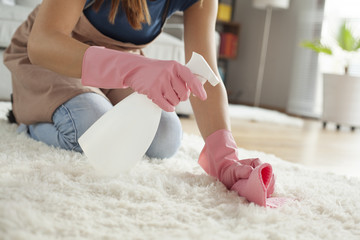Water Heater Repair involves working with high temperatures and pressure. It also requires specialized tools like adjustable wrenches, screwdrivers, and a multimeter for electrical troubleshooting.

Strange noises coming from the water heater such as rumbling or popping sounds are usually caused by sediment buildup in the tank. A professional plumber can fix this by flushing the tank. Keep reading the article below to Learn More.
When it comes to water heater repair, it’s important to understand the factors that influence the overall cost. For example, a leaking tank can increase the price significantly. Other costs include the cost of labor per hour, parts and materials. In addition, the size of the water heater is another factor that impacts the cost of repairs.
The type of damage can also impact the repair vs replacement decision. For instance, a leaky tank is more expensive to fix than a faulty heating element. It’s also worth noting that a gas-powered water heater will require a different kind of repair if it has a problem with the gas line.
For the average homeowner, a basic repair can cost between $50 and $200. For example, if your hot water heater makes loud noises when heating, it could mean that the upper and lower heating elements are faulty. In this case, it’s usually best to call a professional to get the job done right.
Alternatively, if you’re experiencing a continuous supply of lukewarm water, this may indicate a faulty thermostat or sediment buildup in the tank. In this case, you’ll need to hire a professional to perform an inspection and replace the damaged components.
If your water heater is old and nearing the end of its lifespan, a replacement may be a better option than a costly repair. In many cases, newer models are more energy-efficient and can provide a significant savings on your utility bills.
It’s important to contact several plumbers in your area and ask for estimates. This will help you find the best price for your repair or replacement. Additionally, it’s a good idea to hire a plumber who specializes in your type of water heater. This will ensure that they have the experience and tools needed to tackle your specific problem. If possible, try to schedule your repair during the week. This will reduce the likelihood of being without hot water for an extended period of time. Lastly, make sure to read reviews online before hiring a professional. This will give you an idea of the quality of work and customer service that you can expect.
Experience
Your water heater operates silently behind the scenes, making your hot showers, washing clothes, and cooking tasks possible. It is, for the most part, out of sight and out of mind until something goes wrong with it. Then the inconvenience can be unbearable.
A professional plumber can diagnose and repair problems with your water heater, including lack of hot water, inconsistent water temperature, rusty or discolored water, and strange noises. They can also advise you on whether your water heater is worth repairing or replacing.
If your water heater is leaking, you need to act quickly. The sooner a plumber repairs the leak, the less damage your home will suffer. Leaks can result in gallons of water leaking out of the tank and onto the floor, which can cost you a lot of money in repairs and replacement costs.
The main cause of a leaking water heater is a buildup of sediment in the tank. This causes the tank to corrode over time and can lead to leaks. It is a good idea to hire a plumber to clean the tank and remove the sediment periodically to help prevent this problem from occurring in the future.
If you have rusty or discolored water, it could be a sign that the anode rod is going bad. This is caused by a reaction between the anode rod and the sulfate in your water. To fix this, turn off your water for a few minutes and then switch it back on to see if the smell and color go away. If they do, it is likely that the anode rod needs to be replaced.
A professional plumber will have extensive experience in fixing different issues with water heaters. They will be able to spot problems that might not be apparent to the untrained eye, and they can also provide you with a warranty on their work, which gives you peace of mind knowing that your water heater will be repaired correctly. In addition, professional plumbers often offer a service guarantee, which means that they will come back and fix the issue if it happens again.
Appearance
If you notice a foul smell or discoloration of your water, shut off the water supply to your home and call a professional immediately. This is often a sign of corrosion in the pipes and other equipment.
A qualified plumber can examine the water heater to determine whether it needs to be replaced or repaired. They can also offer suggestions for preventative maintenance, such as cleaning the tank and drain. They can also tell you if the current system is still under warranty.
The price of a Water Heater Repair will depend on the type and age of your unit. It may cost more to repair an older unit than a newer one, because the replacement parts are sometimes difficult to find or unavailable. In addition, older units tend to require more frequent repairs due to the age of the components.
You should look for a company with a good work ethic and a clean job site. A reputable company should have a list of references and reviews from previous clients. Check them carefully to get a feel for the company’s work ethic and attitude. A good company will care for its employees, equipment, and the customer’s property.
Many homeowners take their water heaters for granted, until they start to develop problems. A malfunctioning water heater can be a real headache for any family, but the costs associated with repairs or replacements can add up quickly.
In some cases, a simple repair may be all that’s needed to restore your water heater to working condition. For example, if the hot water doesn’t turn on, you might have a faulty thermostat that can be fixed by lowering it to a lower temperature setting. If the water is lukewarm, you might just need a bigger tank or a heating element that’s not working properly.
Regardless of the cause of your water heater’s problems, it’s important to have it fixed as soon as possible. This will save you money in the long run, and help protect your health by preventing the buildup of harmful bacteria in your home’s water supply. If your water heater is old, however, it may be time to consider replacing it.
Warranty
A water heater warranty is a great way to save money on repairs. However, it is important to understand the warranty terms and conditions before signing a contract. Warranties can be full of confusing legalese, so it is best to consult a plumbing professional for help. This will ensure that you are getting the most out of your home warranty.
If you have a newer traditional water heater with a tank, a warranty may cover the cost of repairs for up to 10 years. Typically, this covers the unit’s physical parts and the labor cost to replace them. However, it’s worth noting that the warranty may not cover a complete replacement if the damage was caused by water leakage or other causes outside of the manufacturer’s control.
The warranty should also include a service guarantee and a list of covered appliances. In addition to a water heater, the warranty should also cover other appliances and systems in your home. Ideally, it should also cover the costs of cleaning up after damage to your home and other repairs. Lastly, it should include coverage for the cost of a new gas line to the water heater.
Most manufacturers offer warranties for their products, and a home warranty can cover some of the costs associated with these repairs. These warranties can be purchased separately or as part of a package deal when purchasing a new home. Home warranties can also be upgraded to extended warranties, which allow homeowners to get extra coverage for a longer period of time.
In addition to the cost of the warranty, you’ll want to consider the cost of a professional plumber’s service. A professional will know how to handle the high heat and pressure of a water heater, and they can diagnose problems quickly. They will also have the right tools to repair them safely.
Whether your home has a water heater or not, it’s important to have a reliable backup plan in case it stops working. Water heaters are expensive to repair, and can be even more expensive if they aren’t fixed quickly. The best way to avoid this is by getting a warranty from a reputable company and taking precautions to keep your water heater in good condition.








